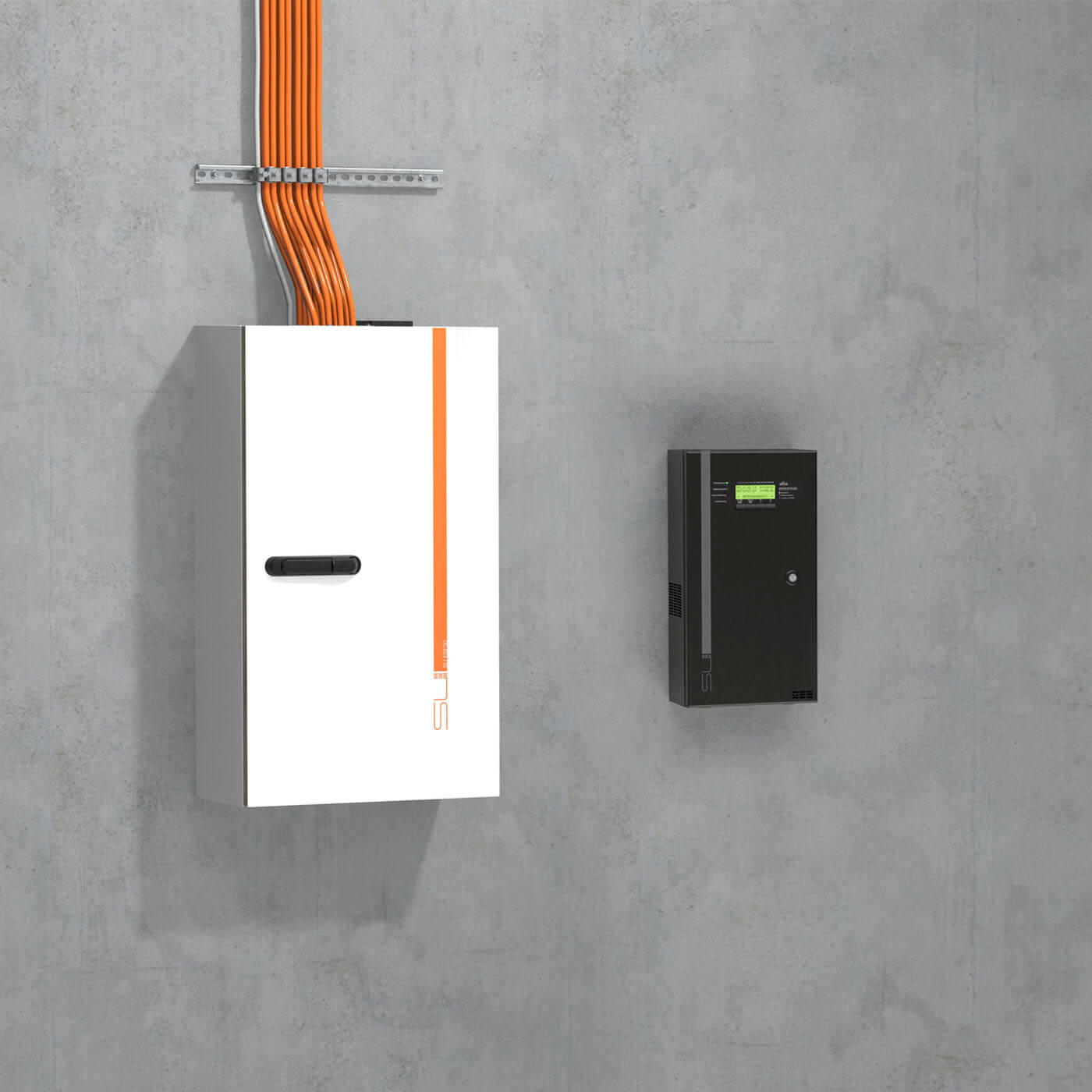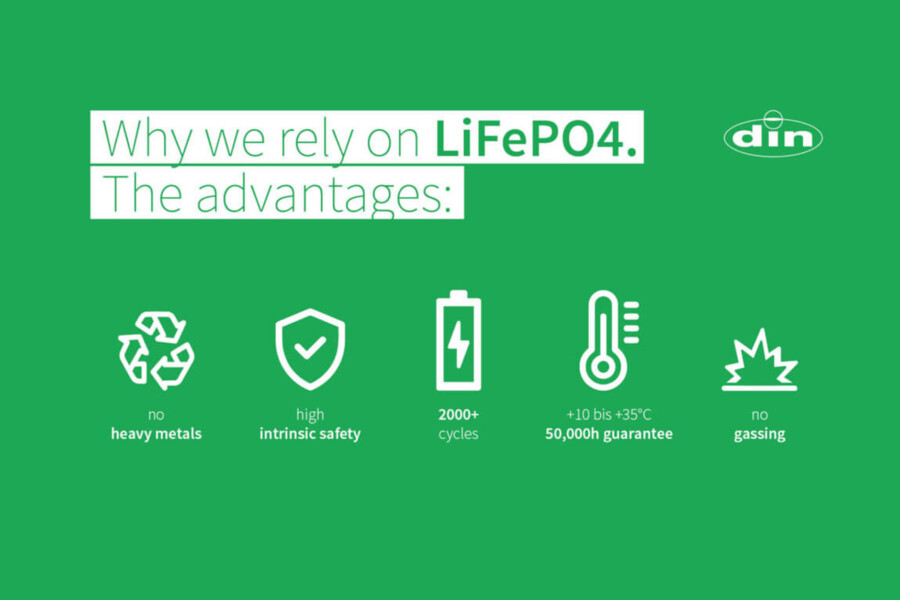LiFePO4 battery:
- Proven & safest lithium technology
- No VEXAT document necessary
- No gassing
- 50,000h/5.7 years din full warranty for +10 °C to +35 °C ambient temperature
- Operating range from 0 °C to 40 °C
- High cycle stability
- No ventilation required
- Low weight
- High intrinsic safety
- Safe protective circuit
- No toxic heavy metals contained
- Compatible with din 24 V systems
Lead-acid battery:
- Proven & safe technology
- Inexpensive to purchase
- 50,000h/5.7 years din full guarantee for +18 °C to +22 °C ambient temperature
Both battery technologies score in different ways. Lead-acid technology is convincing because of its low purchase costs and long lifetime at a relatively constant ambient temperature of 20 °C. However, the lifetime decreases with increasing ambient temperatures per °C.
LiFePO4 technology, on the other hand, additionally shows its strengths at higher temperatures > 28 °C and a high durability of the lifetime under these ambient conditions. The higher purchase costs are put into perspective over the course of the operating life, as the replacement cycle is significantly lower compared to lead-acid batteries. In applications where ventilation cannot be implemented (e.g. historical buildings), the LiFePO4 battery is a very good choice because it is gas-free.
Specific requirements of an application
Ultimately, the choice between lithium-iro- phosphate batteries and lead-acid batteries depends on the specific requirements of an application. Both technologies have their justification and, in conjunction with our innovative SU NET systems, form a perfectly coordinated total solution package.



